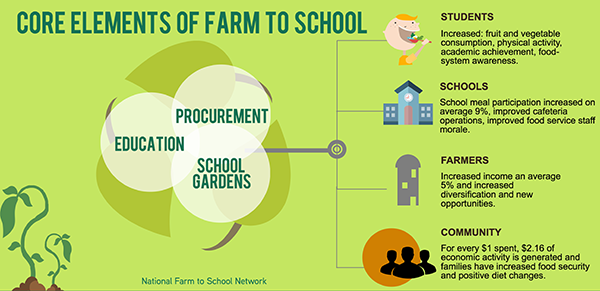Farm to school happens in the cafeteria, classroom and community.
There are many ways to get involved in farm to school initiatives. For example, schools may:
-
Serve local food at breakfast, lunch or during snack time.
-
Incorporate school gardens or food preparation within classroom lessons.
-
Feature local foods in healthy school fundraisers.
-
Engage students in trips to a farm or farmer presentations.
-
Establish composting and waste management programs.
Dig deeper into Minnesota’s farm to school initiatives and practices!
Related resource
The Benefits of Farm to School (PDF) — National Farm to School Network — This fact sheet offers a research-based overview of the benefits of farm to school to students, parents, schools, communities, and farmers.
Farm to School leaders in Minnesota — Minnesota Department of Education — This resource offers a list of people across Minnesota providing leadership to farm to school in their communities and statewide.





